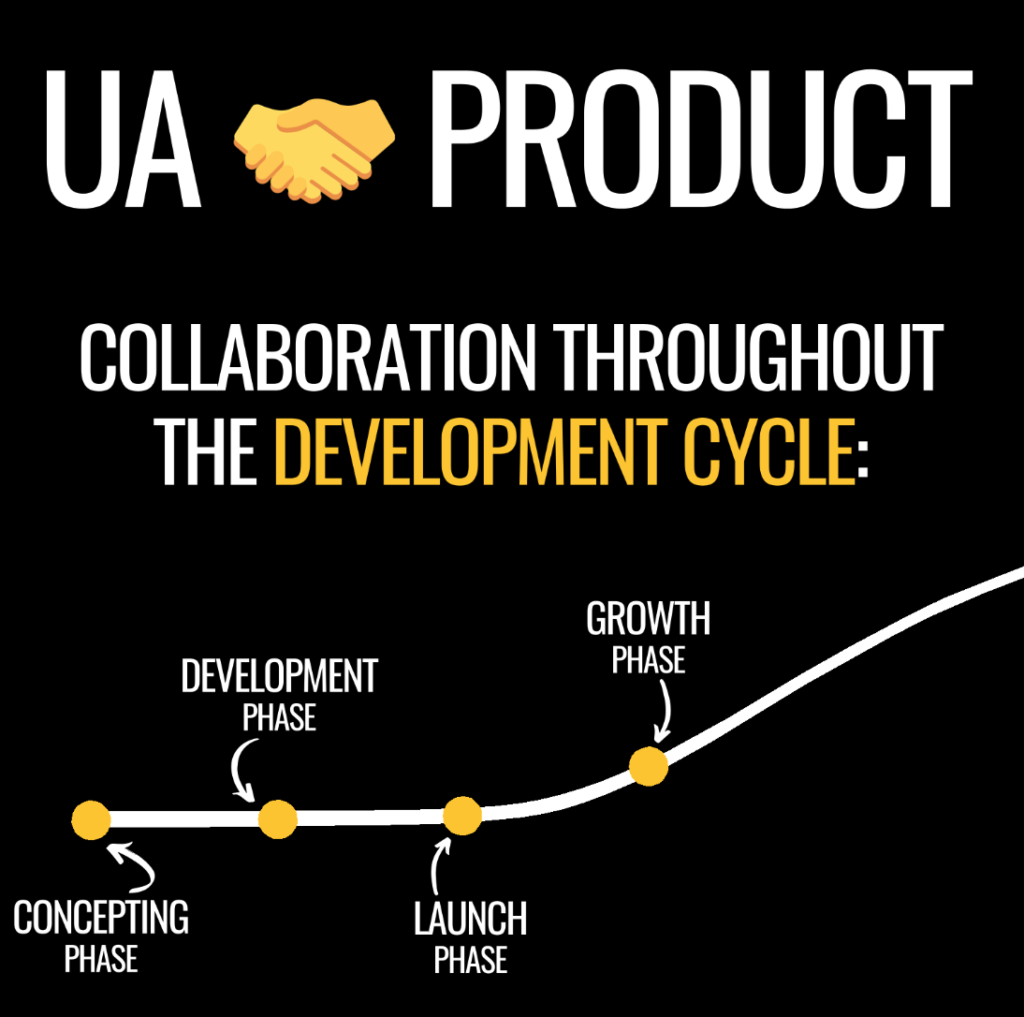About the author
Richard Kos
Gaming growth is my passion, primarily focussing on in-game monetization and advertising.

Journal 40 Richard Kos September 12
🧩 Collaboration between UA and Product teams is key to success at every stage of Game Development. Product teams can benefit from UA by gaining insights through Market Research, A/B tests, Technical Tests etc.
Swipe below for the UA Roles and how Product/UA work hand-in-hand throughout these phases:
🔍 Concepting Phase
🚀 Development Phase
🎯 Launch Phase
📈 Growth Phase
For every studio – the collaboration between User Acquisition (UA) and Product is essential to achieve success. By aligning UA strategies with product development goals, studios can create games that identify potential issues early on, meet player needs, and thrive in the market. This blog explores the UA roles in each phase of development and how UA can support product development throughout every phase.

It’s a common misconception that UA efforts only start when a game is ready to launch. In reality, UA should be involved from the very start of the game development process. By doing so, product teams can benefit from UA insights to build games that resonate with their target audiences.
During the conception phase, the Product team focuses on defining the vision, core mechanics, and unique selling points (USP) of the game. However, this is also the stage where UA can bring valuable data into the mix.
UA Roles:
By leveraging UA data early, teams can validate creative choices such as art styles, user interface design, and overall game mechanics. For example, UA teams can run A/B tests on different creative assets, helping the product team make informed decisions before development begins.
The development phase is where the game’s core features are built, tested, and refined. At this stage, UA efforts go beyond creative validation and start to focus on the technical aspects of the game’s performance.
UA Roles:
As the game prepares to go live, UA teams play a critical role in preparing for the global launch. This phase is all about testing the waters and ensuring that early players are engaged and retained.
UA Roles:
During the launch phase, UA can provide real-time data on player engagement and the effectiveness of marketing campaigns, allowing the Product team to quickly iterate and improve the game’s performance.
Once the game is live, the focus shifts to growth. Here, UA continues to collaborate with the Product team to refine creative assets, expand to new channels, and optimize community management.
UA Roles:
Growth is an ongoing process that requires constant monitoring and optimization. The insights gained from UA campaigns can inform future updates and expansions, ensuring the game remains competitive in the market.
If you’re in the process of developing a game, consider involving your UA team as early as possible. The insights they provide can save time, reduce costs, and ensure that your game is positioned for success right from the start.
The collaboration between UA and Product teams is of great importance throughout the entire game development cycle. By working together from the conception phase all the way to the growth phase, both teams can create a game that not only meets player needs but also performs well in the market.
About the author
Gaming growth is my passion, primarily focussing on in-game monetization and advertising.
Please login or subscribe to continue.
No account? Register | Lost password
✖✖
Are you sure you want to cancel your subscription? You will lose your Premium access and stored playlists.
✖